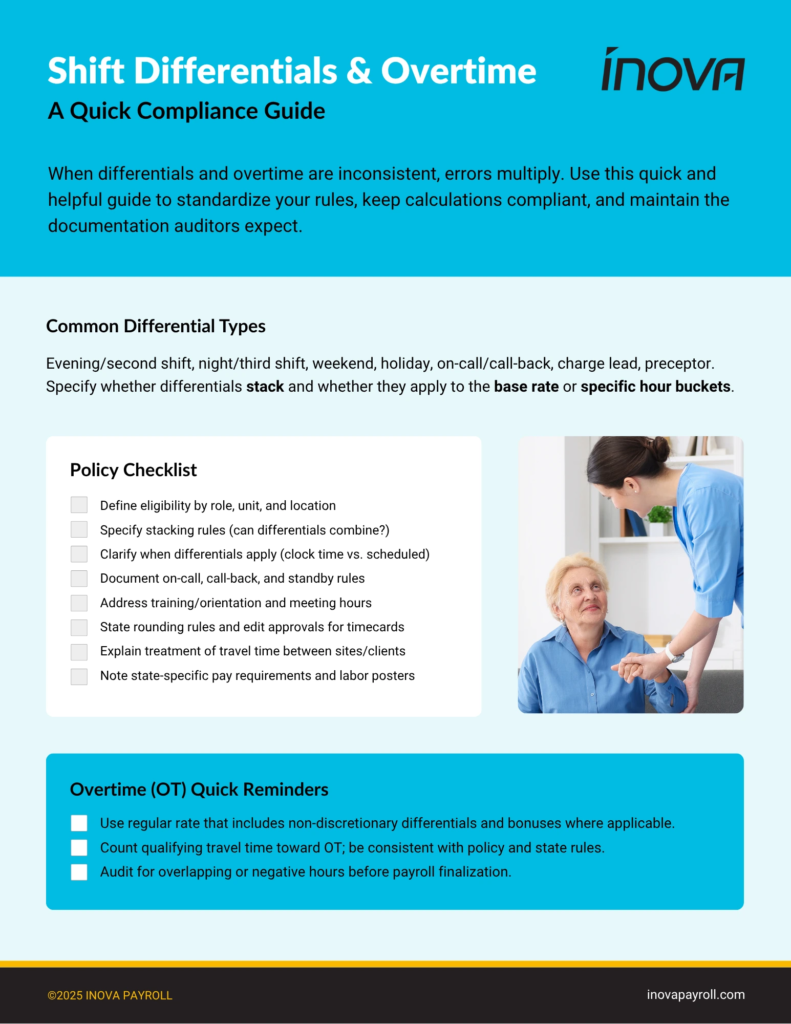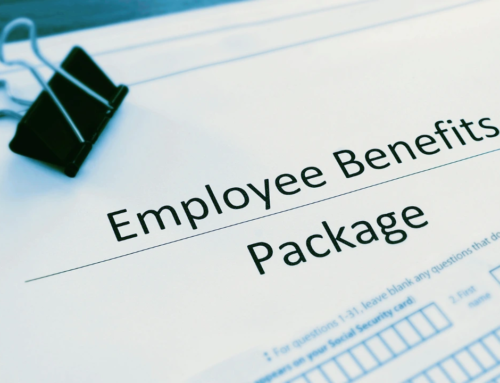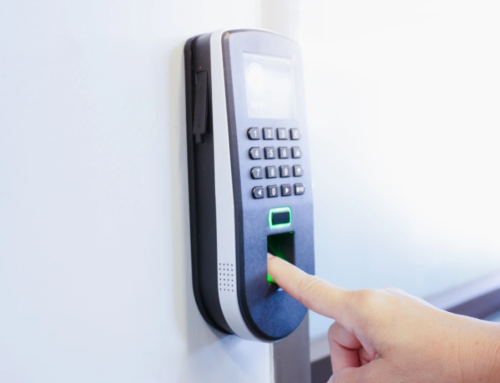Compliance Challenges Extend Beyond Hospital Walls
Hospitals often dominate compliance conversations, but the toughest HR and payroll requirements appear across long-term care, home health, behavioral health, and outpatient centers.
Each of these providers must manage evolving payroll based journal (PBJ) rules, electronic visit verification (EVV) mandates, and payer-specific reporting formats. A missed submission or incomplete record can trigger fines, reimbursement delays, or lower quality ratings.
For a broader look at how national regulations affect everyday HR operations, you might also read how a government shutdown impacts HR.
CMS notes that Five-Star staffing measures use PBJ data submitted quarterly and due 45 days after each reporting period, underscoring the importance of timely, accurate files.
These pressures are widespread, but how they show up day to day depends on the setting. Before we get specific, here’s the broader compliance burden non-hospital teams are managing.
Solving these consistently usually isn’t a policy problem; it’s a systems problem. That’s why the next step is choosing HR and payroll tech that supports compliance by design.
The Overlooked Compliance Burden in Healthcare
Non-hospital organizations face a similar regulatory load to hospitals.
They must:
- Track hours, credentials, training, and shifts across multiple roles and facilities.
- Manage overtime, travel time, and shift differentials in compliance with labor law.
- Submit accurate, timely data to CMS and Medicaid programs to maintain eligibility and ratings.
Even small discrepancies can lead to audits, wage disputes, and revenue loss, pulling focus away from patient care.
Because the rules and risks aren’t identical everywhere, let’s look at what compliance by care setting really requires.
PBJ Compliance Requirements by Care Setting
Each healthcare environment brings its own compliance priorities and pitfalls. Below are key considerations by care type and how Inova helps simplify each process.
Long-Term Care Facilities
CMS requires PBJ reporting to confirm staffing accuracy.
Facilities must:
- Classify employees correctly by job code.
- Submit XML files that align with CMS formatting.
- Maintain timekeeping systems integrated with PBJ reporting software.
During onboarding, Inova helps configure job roles to align with CMS PBJ codes, reducing the risk of rejected submissions and helping protect your Five-Star staffing rating.
CMS emphasizes that PBJ enables regular, more frequent collection and is auditable to ensure accuracy. Prioritizing clean, system-driven exports will ensure your payroll runs smoothly and withstands scrutiny.
What you submit doesn’t just stay behind the scenes, CMS also publishes daily nurse staffing at the facility-day level from PBJ submissions, heightening visibility into staffing patterns.
Home Health & Personal Care Agencies
EVV mandates apply to Medicaid-funded visits and require agencies to:
- Record the exact start and end time of each client visit
- Factor caregiver travel time into overtime calculations
- Align scheduling with both caregiver availability and labor law requirements
Mandated under the 21st Century Cures Act, Electronic Visit Verification (EVV) is now a federally required standard for home- and community-based care. States were directed to implement EVV for personal care services (PCS) and home health care services (HHCS) by 2020 and 2023, respectively, though many continue to refine systems and enforcement.
For home health agencies facing turnover during peak seasons, coordinating compliant schedules while managing staffing gaps can be especially challenging. These seasonal hiring compliance tips can help.
Behavioral & Mental Health Centers
- Track supervision hours and license renewals for provisional staff.
- Manage variable credential levels across shifts and pay structures.
Credential tracking within Inova helps HR stay ahead of license renewals and supervision requirements, with automated reminders that reduce the risk of compliance delays or billing interruptions.
Supporting staff wellness is just as important as tracking compliance. See insights on mindfulness at work that help reduce burnout in healthcare teams.
Outpatient Clinics & Surgery Centers
- Document OSHA and HIPAA training.
- Track differential pay for on-call and procedure-based work.
With Inova Payroll’s reporting tools, administrators can monitor OSHA, HIPAA, and PBJ compliance data from one platform, creating dashboards that fit their organization’s needs.
Outpatient leaders also face scheduling and time-tracking challenges similar to other hourly teams. Learn how accurate tracking supports compliance in preventing time theft and buddy punching.
Different settings, same headaches: overtime accuracy, credentials, and exclusions tend to surface everywhere. Here are the common threads to manage HR and payroll consistently.
Common HR and Payroll Compliance Gaps Across Healthcare
Across all non-hospital settings, several challenges recur:
- Accurate overtime and shift differential tracking
- OIG and GSA exclusion monitoring to avoid disqualified hires
- Credential and CEU management
- Digital labor-law poster access for mobile or remote employees
- Multi-state payroll and tax compliance
Inova’s multi-location data sync keeps payroll, credentialing, and tax tables updated automatically by state, reducing risk for organizations with multiple facilities.
For HR leaders building retention strategies that go beyond pay, explore how benefits design during open enrollment supports loyalty and compliance.
HHS-OIG advises organizations to routinely check the LEIE, and warns that hiring excluded individuals may result in civil monetary penalties, a good reason to automate exclusion screening. OSHA’s Bloodborne Pathogens standard requires training on initial assignment and at least annually thereafter for exposed workers, documentation that many outpatient and LTC teams track alongside credentials. OSHA HHS also requires a security awareness and training program for workforce members under the HIPAA Security Rule.
Solving these consistently usually isn’t a policy problem, it’s a systems problem. That’s why the next step is choosing HR & payroll tech that supports compliance by design.
How HR and Payroll Technology Supports PBJ Accuracy
Manual spreadsheets and disconnected systems make compliance fragile.
A unified HR and payroll platform can:
- Offer role-based access for managers and auditors.
- Send automated alerts for PBJ or credential deadlines.
- Generate PBJ-compliant exports with audit trails.
- Monitor OSHA, HIPAA, and licensure compliance through configurable workflows and reminders.
Inova’s reporting module helps you create PBJ XML exports in CMS format right from your Inova system, reducing extra steps and errors.
Catch PBJ errors before CMS does.
Inova helps simplify PBJ reporting with configurable exports and pre-submission review tools, reducing the risk of file rejections and audit delays.
Unified payroll and HR systems like Inova Payroll make compliance reporting faster and more reliable. This approach mirrors CMS’s intent behind PBJ: a regular, auditable staffing data process supported by consistent, automated workflows.
Stay Focused on Care, Not Compliance Chaos
Quality care depends on compliant, efficient operations. Inova Payroll helps healthcare providers simplify PBJ reporting, EVV tracking, and payroll compliance through one reliable platform.
With integrated workflows and real-time visibility, Inova helps providers keep their teams compliant and their attention on patient care.





